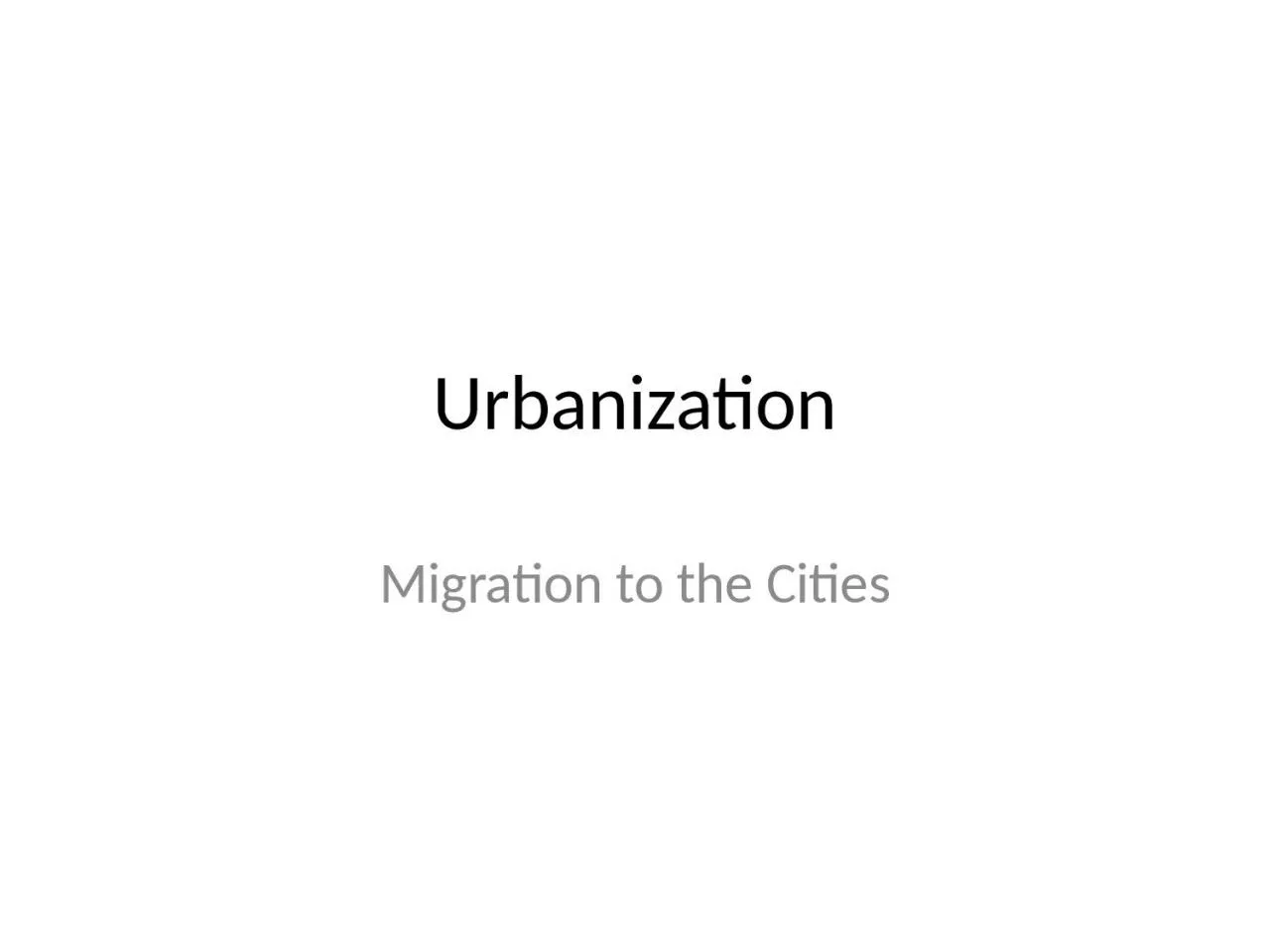

Learning Targets Describe how people moved from one place to another in big cities in the late 1800s Know what enabled the middle class to move to streetcar suburbs Know how political machines operated and give an example ID: 1039977
Download Presentation The PPT/PDF document "Urbanization Migration to the Cities" is the property of its rightful owner. Permission is granted to download and print the materials on this web site for personal, non-commercial use only, and to display it on your personal computer provided you do not modify the materials and that you retain all copyright notices contained in the materials. By downloading content from our website, you accept the terms of this agreement.
1. UrbanizationMigration to the Cities
2. Learning TargetsDescribe how people moved from one place to another in big cities in the late 1800s.Know what enabled the middle class to move to “streetcar suburbs”.Know how political machines operated and give an example.Be able to describe the problems of urban living in the late 1800s and their causes.
3. UrbanizationPost-Civil War (those living in towns of 2,500+)1870: 10 million1900: 30 millionNew York:1860: 800,000 population1900: 3,500,000 population (an increase of 77%)Chicago:1860: 109,0001900: 1,600,000 (an increase of 93%) •Many, but not all, were immigrants.
4. A New City EnvironmentSkyscrapersMass Transit
5. A New City EnvironmentSubwaysAs city streets became more and more congested, city planners looked for alternatives to moving people from place to placeBoston built the 1st subway systems, then New YorkChicago built elevated trains
6. Class DevelopmentHigh SocietyThe rich could build a feudal castle, English manor, a French chateau, a Tuscan villa, Persian Pavillion right in the middle of the cityMiddle ClassMass transit allowed the middleclass to move to the suburbs The Working Classtenements
7. ProblemsCrime, violence, fire, diseases, pollution1880: Murder rate—25 per million people1900: Murder rate—100 per million people1997: Murder rate—57 per million people
8. Political CorruptionPolitical Machines: informal political group designed to gain and keep power Party Bosses: ran the political machinesFraud and Graft: getting money through dishonest or questionable meansTammany Hall and William M. “Boss” Tweed
9. Review QuestionsHow did people move from one place to another in big cities in the late 1800s?What enabled the middle class to move to “streetcar suburbs”?How did political machines operate? Give an example.
10. Essay Question and Answer:Be able to describe the problems of urban living in the late 1800s and their causes.Crime and violence, fire, disease, and pollution posed threats to city dwellers. The rapid growth of cities made these problems worse, Pickpockets, swindlers, and thieves thrived in crowded urban living conditions. Major crimes such as murder living conditions. Major crimes such as murder increased as well. Alcohol contributed to violent crime, both inside and outside the home. Improper sewage disposal contaminated city drinking water and triggered epidemics of typhoid fever and cholera. Pollution resulted from horse waste that fell in the streets, smoke belching from chimneys, and soot and ash from coal and wood fires.